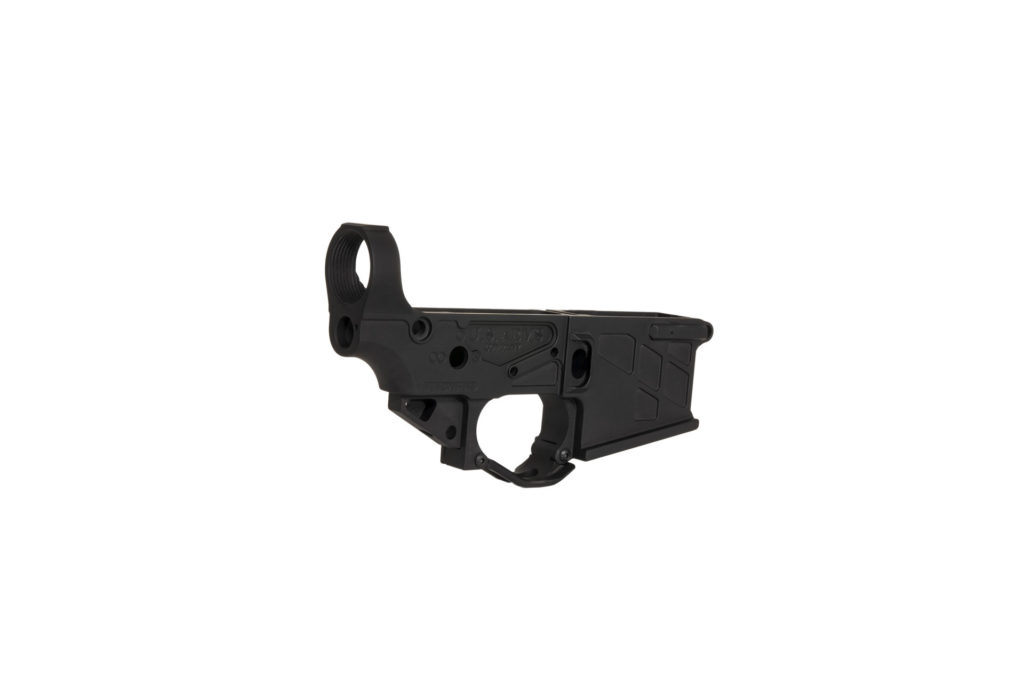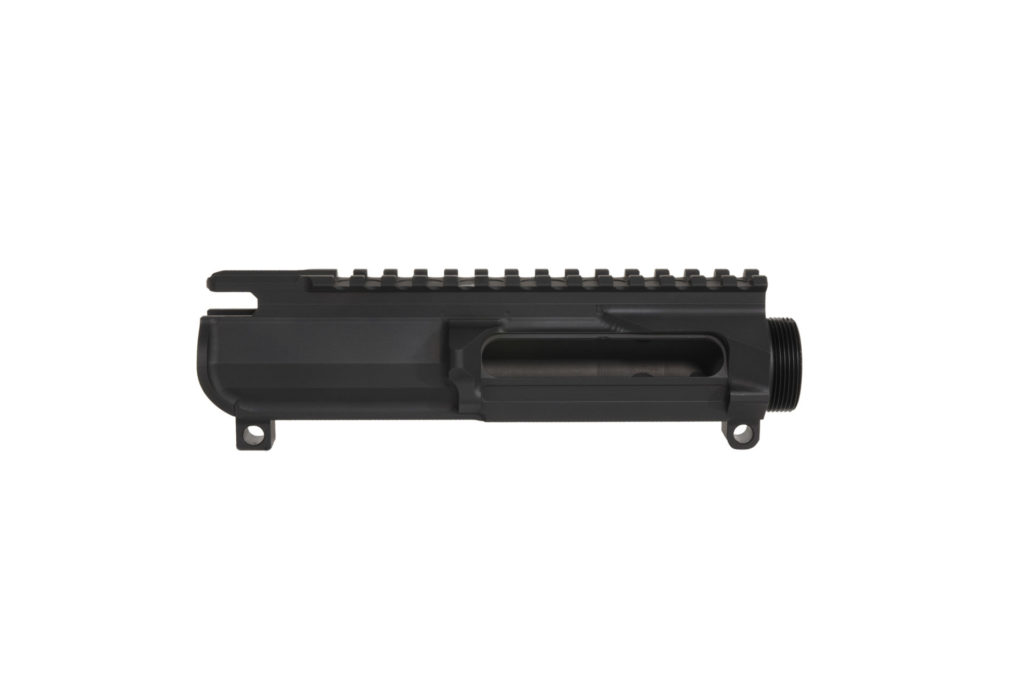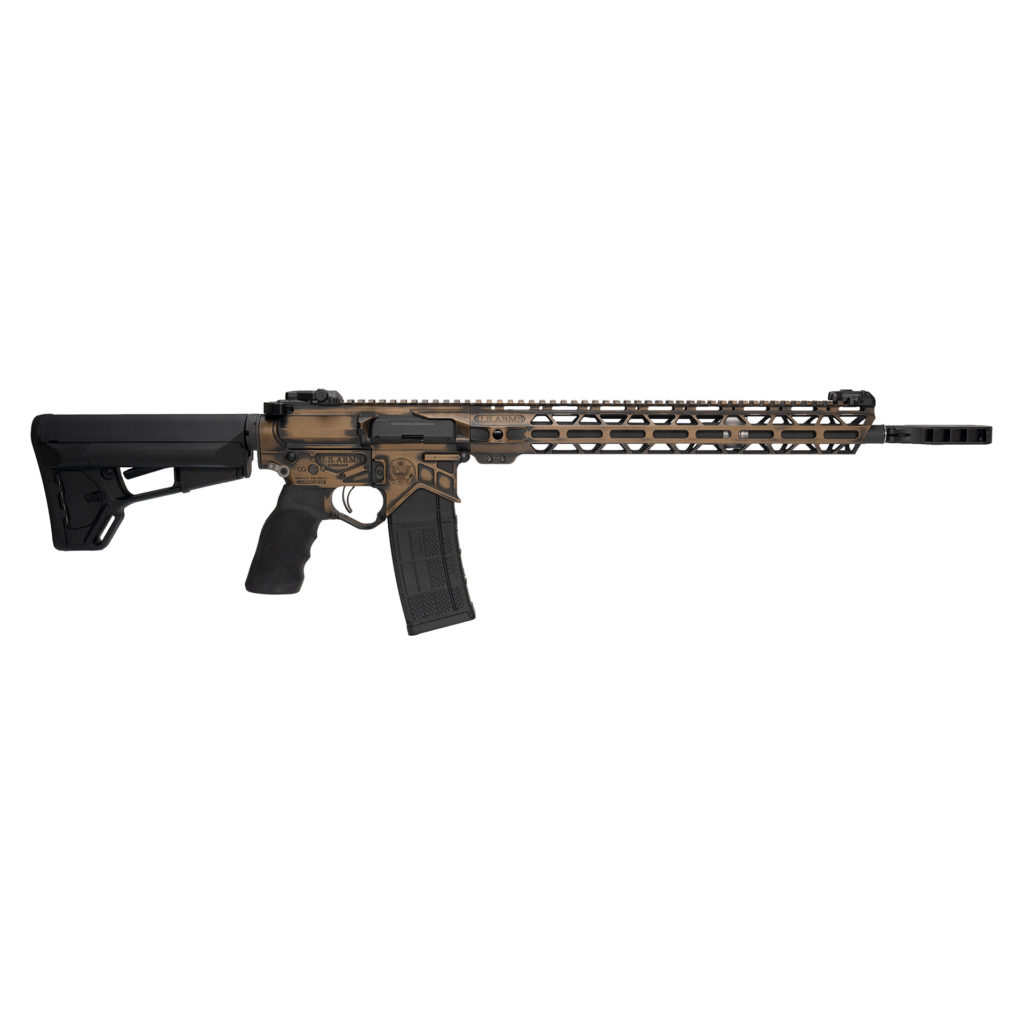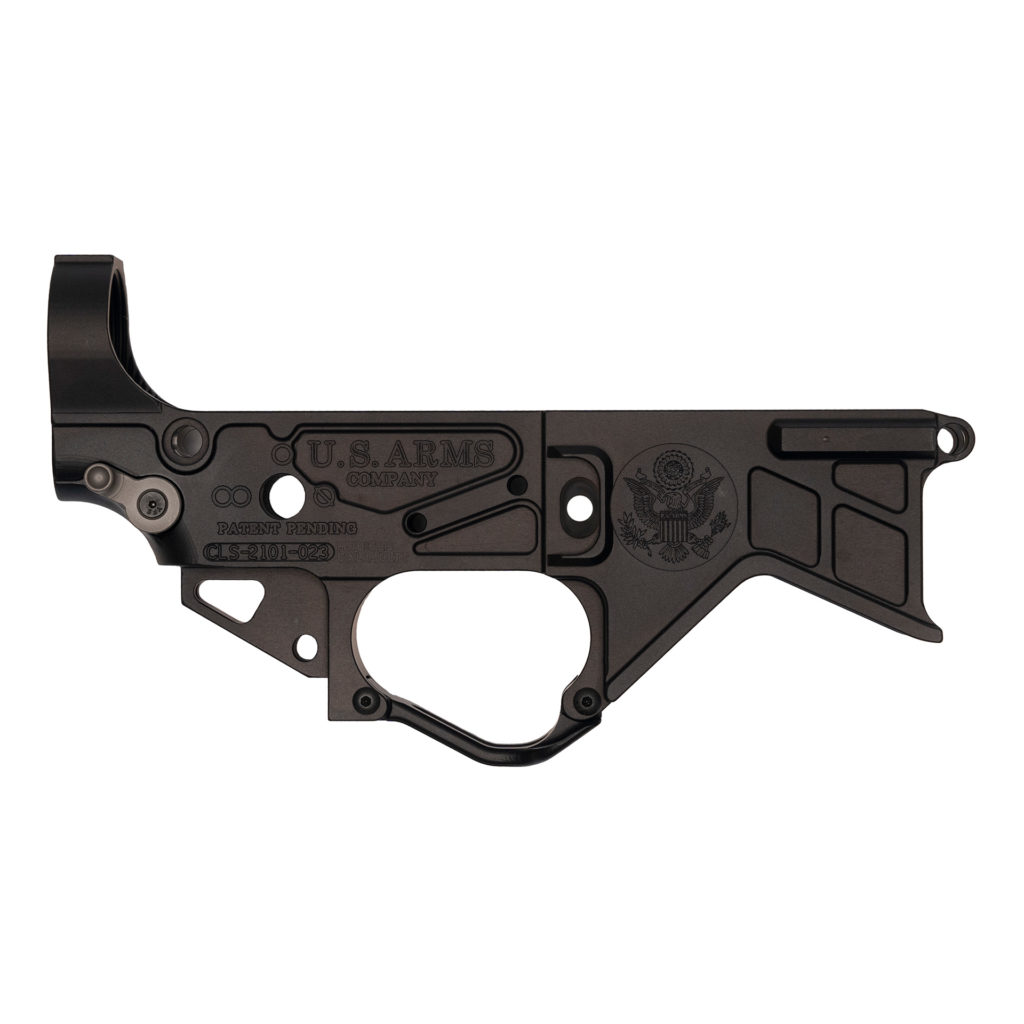What is an AR Receiver?
An AR receiver, or frame, is the component of the gun that allows you to fire the unit. AR-15s have an upper receiver and a lower receiver. The upper receiver is not regulated, nor is it considered a gun. The lower receiver is regulated and considered the firearm. Its major components include the trigger, firing mechanism, and magazines. The upper receiver includes the barrel and bolt carrier group, which houses the firing pin.
AR-15s are designed to be assembled using interchangeable components in order to switch parts, customize, or replace failed parts. For that reason, many of the individual pieces of the AR-15 are not regulated. That is true of most guns that you can disassemble. For example, you can change the barrel on a rifle and not require a permit to purchase a replacement.
The Lower Receiver

The Lower receiver consists of a single unit that is the pistol grip, trigger assembly or firing control mechanism, buffer tube, buttstock, and magazine. Similar to upper receiver components, not all these pieces of the lower receiver are controlled by gun laws. They are, in some cases, the subgroup of parts that attach to the lower receiver.
- Trigger Assembly – a group of parts that includes the trigger, trigger weights, springs, disconnector, safety, safety hammer, and other parts that comprise the trigger assembly that make it possible to fire a round.
- Buffer Tube – a connection piece that joins the back of the lower receiver and houses the buffer and buffer springs. Part of the job of the buffer tube is to reduce some recoil from the AR-15. It also supports the buttstock of the gun. The main function of the buffer tube is to cycle the gun and preventing the bolt action group from damaging or destroying the tube.
- Buttstock – like other types or rifles, the buttstock on an AR-15 is the part that fits against your shoulder to help stabilize the gun when aiming and shooting. It may attach directly to the buffer tube or not. There are collapsible stocks or fixed stocks.
- Magazine – magazines hold the bullets or shuttle the bullets. In terms of legal regulations, magazines are often regulated on their own by each state. Some states limit the size or capacity of magazines for AR-15s and other guns. Be sure to check with your local and state laws about magazine regulations that apply to you.
- Pistol Grip – a customizable part of the lower receiver. The pistol grip is not a regulated part of the lower receiver, meaning you can buy different pistol grips without needing a permit or license. Pistol grips come in an array of styles allowing the gun owner to fit the gun’s grip to the shooter’s hand.
The Upper Receiver

The upper receiver on an AR-15 consists of many parts and subgroups of parts or parts assemblies. Those include the barrel, muzzle compensators, muzzle brakes, muzzle flash hiders, bolt carrier group, gas blocks and gas tubes, charging handle, forward assist, handguards, fore grips, ejection port cover, and rails. See below for descriptions on each of these components.
- Barrel – AR-15 barrels must be sixteen inches long or longer to be considered an AR-15 rifle. When the AR-15 barrel is shorter than sixteen inches, it is illegal without the appropriate $200 tax stamp and falls under the short-barreled rifle (SBR) category. However, you can own an AR-15 pistol without a tax stamp, which is a weapon system based on the AR-15 with a barrel less than 16 inches and has a pistol brace as opposed to a butt stock.
- Muzzle Compensator – fits on the end of the barrel and helps to reduce the upward recoil effect that occurs when you fire the gun. It has special components that force the blast inertia and gas released from the bullet firing in an upward motion which helps to force the barrel of the AR-15 to remain somewhat level rather than ticking upwards when fired. Some compensators are also used to direct the blast from the rifle away from the shooter.
- Bolt Carrier Group (BCG) – is the part of the AR-15 that makes the semiautomatic firing occur once the shooter pulls the trigger. Internal parts include the firing pin, gas key, cam pin, extractor and the bolt.
- Muzzle Brake – is a stabilizer against recoil that helps prevent the up and down kick as well as the side-to-side kick. Once the shot is fired, the explosion causes a buildup of torque in the barrel. As the torque increases the barrel wants to move in many directions. Muzzle brakes reduce that movement so that there is less time needed to refocus your aim, especially in a semiautomatic shooting situation. Our unmatched Muzzle Brake reduces recoil up to 94%.
- Gas Block and Gas Tube – is a system that diverts high pressure gas from a fired bullet into the upper receiver through a small port. This component works by transporting a portion of the gas through a port in the barrel to the gas tube. The gas tube expels said gas though the upper receiver to the bolt carrier group. The gas causes the bolt carrier group to retract and load the next round in the chamber.
- Charging Handle – goes by many names. Some refer to the charging handle as a bolt handle or cocking handle. It is the piece that places the bolt and hammer-striker in the cocked position. This is useful to extract or eject casings or bullets – spent or unspent.
- Forward Assist – locks the bolt in place by pushing the bolt carrier into a forward position. Not all AR-15s have Forward Assist buttons.
- Handguard – is a shield or component that protects the hands from being burned while shooting the AR-15. There are many accessories for handguards that can be attached using KeyMod or M-Lok mounting systems Most handguards also have picatinny rails that can also be used in addition to KeyMod or M-Lok to mount accessories to your AR-15.
- Fore grip – is the technical term for a hand stop. It prevents your hand from flying forward when you shoot the gun. A hand stop is an excellent way to improve the feel of the gun while you shoot. If you are not happy with how the AR feels, consider changing the hand stop or fore grip.
- Ejection Port Cover – is the “lid” through which the spent shell casing exits the gun.
- Picatinny Rail – Twin track metal guides that allow you to add accessories to your AR. Some types of rails have many purposes including holding opticals and tactical lights.
What to Look for in an AR Receiver

If you’re looking for components or complete upper or lower receivers, be sure that the parts or units you shop for meet exact military specs. That is the easiest way to make sure that the unit or part will match your gun.
In terms of material, aluminum and specifically 7075 aluminum is what the original AR-15 design specified. You will find a wide array of materials that compose parts of the receivers. However, it’s difficult to beat aluminum due the lightweight and durable properties.
It is essential to choose components that fit your gun and to create a seamless connection. An AR-15 is an assembly of parts – that is how the gun was designed – but the fit of those parts plays a massive role in how accurate the gun shoots. Sloppy and moving parts cause the gun and gun barrel to move while the bullet travels down the barrel. Tight-fitting parts create a single unit and that is critically important. We are “Home of the World’s Tightest Receivers” to provide unmatched fit to your AR-15.
If you are shopping for a receiver for your AR-15 and focusing on cost, be prepared to read the entire description for each component you want to buy. There is a wide variance in costs across the same parts, including used parts and OEM parts. You want to find the parts or receivers that best fit your gun, your budget, and that you can enjoy for years. Not all parts are made the same or to the exacting standards that are required to fit your gun.
Home of the World’s Tightest Receivers

Problems with accuracy occur when the receiver set is unmatched or has a poor fit. The U.S. Arms Cam-Lock Lower Receiver fixes that gaping problem and improves the accuracy of all AR-types.
When you shoot an AR-15 or other AR type firearm, the upper register kicks forward slightly and then the torque from the bullet causes the receiver set of the gun to wobble. Those motions move the barrel of the gun and can cause accuracy issues.
The U.S. Arms Cam-Lock Lower Receiver mechanically locks the upper and lower receivers together preventing the upper receiver from moving independently when the gun is fired. Most, if not all, AR-15 style rifles have significant play or “wobble” between the upper and lower receivers. Cam-Lock is what the name infers; a locking system. Cam-Lock is much superior to “wedge systems” that push the receivers apart and out of alignment. Cam-Lock locks the mating surfaces of the upper and lower receiver together eliminating any play in the receiver set. The rigid receiver set improves the accuracy of each round fired by the AR-15 thanks to the locking mechanisms that make it feel as though the upper and lower receiver sets are one unit rather than two.
The Cam-Lock Lower Receiver by U.S. Arms fits snuggly with any Mil-Spec upper receiver including piston or gas impingement systems.
